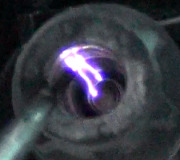Throwing parts at it is going to cost you a lot of money until you understand how the system works. It's really very simple and reliable, but not obvious.
Since you are smart enough to measure the voltage at the ignition coil, hook your voltmeter there and set it so you can see it from inside the car. When you turn on the ignition switch, you will see full battery voltage there for only two seconds after you turn on the ignition switch, then it will go back off. That's proof the circuit is working, and it's the reason you found 0 volts there. You might also hear the fuel pump run for those two seconds because it's on the same circuit.
You also should have checked for fuel pressure. You would have found that missing too. That makes the problem something related to both circuits, not the ignition system. You mentioned you replaced the "pickup coil", but now you're wondering if it could be the crankshaft sensor. They're the same thing. Where exactly was the part you're referring to?
The common cause for this problem is the Hall Effect pickup assembly in the distributor. It's a black disc under the rotor and has three wires attached to it.
Here's how the system works. When you turn on the ignition switch, the engine computer turns on the Automatic Shutdown (ASD) relay for two seconds, then it turns back off until pulses arrive from the crankshaft position sensor. These pulses only occur when the engine is rotating, (cranking or running). It looks to novices like the computer isn't turning on the ASD relay if you're troubleshooting the system while just leaving the ignition switch turned on, but that's what's supposed to happen. That two-seconds that the relay turns on is enough to run the fuel pump to insure fuel pressure is up and ready for starting.
When crankshaft sensor pulses arrive during cranking, the engine computer turns on the ASD relay constantly. Voltage from the relay feeds 12 volts to the ignition coil(s), fuel injector(s), alternator field winding, oxygen sensor heater, and the fuel pump or fuel pump relay. Ever hear of Ford's silly inertia switch? It will kill the engine if you hit a big enough pothole. Chrysler accomplishes the same thing much more effectively with the ASD relay.
If you are in a crash that ruptures the fuel line, the in-tank electric pump will pour raw fuel on the ground creating a severe fire hazard. With a ruptured line, you won't have fuel pressure. Without pressure, the injectors won't spray fuel and the engine will die. When there is no rotation, there's no crankshaft sensor pulses so the engine computer turns off the ASD relay and removes the voltage supply to the fuel pump.
After you replace the Hall Effect switch in the distributor, you will probably find the engine will not stay running unless you hold the gas pedal down about 1/4". By disconnecting the engine computer, you introduced yet another variable into the mix. The computer must relearn minimum throttle. Until you do that, it will never know when it must be in charge of idle speed and when to leave it up to you.
Drive at highway speed with the engine warmed up, then coast for at least seven seconds without touching the brake or gas pedals. The computer will memorize the value from the throttle position sensor. Every time it sees that value from now on, it will control idle speed.
Caradiodoc
Saturday, December 12th, 2009 AT 1:30 AM



